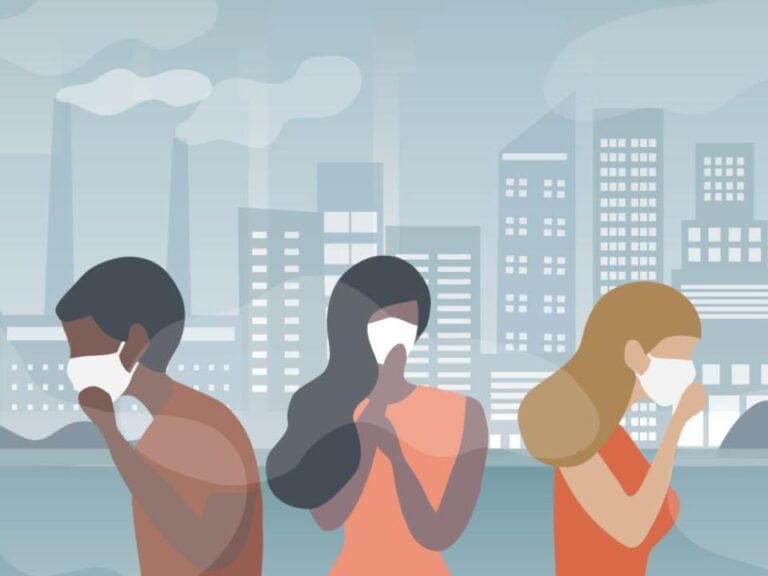Stronger regulations lowering levels of fine particulate air pollutants (PM2.5) would benefit the health of all Americans, but Black Americans and low-income Americans would likely reap the most benefits, including a lower risk of premature death, according to a new study led by researchers at Harvard T.H. Chan School of Public Health, Columbia University Mailman School of Public Health, and the University of Colorado. The findings are published in the New England Journal of Medicine.
“The EPA is currently considering stronger rules for PM2.5 air pollution and the decision will have profound effects on ensuring all Americans have an equal opportunity to breathe clean air,” said co-lead author Scott Delaney, research associate in the Department of Environmental Health at Harvard Chan School. “Our research shows that, while stronger rules will protect all aging Americans from air pollution, those harmed the most by air pollution will benefit the most—and that these benefits may be larger than prior research suggests.”
The study is the first to examine how groups defined simultaneously by both racial identity and socioeconomic position differ in their exposure and susceptibility to PM2.5 air pollution.
Researchers utilized Medicare data from more than 73 million Americans ages 65 and older between 2000 and 2016—amounting to 623 million person-years analyzed according to racial identity (Black or white), income level (Medicaid eligible or ineligible), and annual average PM2.5 exposure by zip code.
The results showed that all aging Americans’ risk of premature death would decrease with stronger air pollution rules, but that Black higher-income, Black low-income, and white low-income adults may benefit more than white higher-income adults. Currently, the EPA’s National Ambient Air Quality Standards (NAAQS) for annual average PM2.5 levels is 12 μg/m3. The researchers found that if that standard was lowered to 8 μg/m3, the result would be an estimated 4 percent reduction of mortality rate for higher-income whites, while for marginalized communities it would be considerably higher: 7 percent for Black higher-income and 6 percent for both white low-income and Black low-income adults.
“Setting the strongest possible NAAQS for PM2.5 pollution is critical to protect the health of the public, particularly the health of the most vulnerable members of our communities.“ said Xiao Wu, assistant professor of biostatistics at Columbia Mailman School and a co-author. “Furthermore, the steps needed to mitigate the disastrous effects of climate change in the future are substantially overlapped with those needed to reduce the health burdens of air pollution in the present.”
“The EPA has a huge opportunity,” said senior author Francesca Dominici, Clarence James Gamble Professor of Biostatistics, Population, and Data Science and co-director of the Harvard Data Science Initiative. “We have a shared responsibility to safeguard the air we breathe and to protect our more vulnerable community members from the effects of climate change. Bold action from the EPA to establish a substantially stronger NAAQS for PM2.5 air pollution is a pragmatic, proven way to clean up our air, reduce the impact of climate change on human health, and drive innovative climate change solutions.”
Co-authors include Other Harvard Chan co-authors included Kevin P. Josey, Rachel C. Nethery, and Danielle Braun, Harvard T.H. Chan School of Public Health; and Priyanka DeSouza, University of Colorado, Denver.
The study “Air pollution and mortality at the intersection of race and social class,” was supported by the National Institutes of Health and the Sloan Foundation.
Columbia University Media
Black Americans, Low-Income Americans May Benefit Most from Stronger Air Pollution Policies

